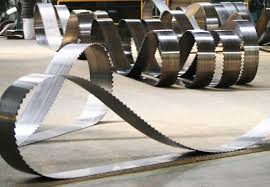Tech News
Quick Guide to the Basic Editor Settings that Affect Brightness in Videos
Do you have a video that looks a bit dark, and you’d like to make brighter? Although it may seem like all you need to do is fire up your video editor and adjust the ‘brightness’ setting – that isn’t really the case.
In fact you will probably notice that there are lots of other settings in your editor. Each of these can affect the ‘brightness’ of your video in different ways, so it helps to know about them:
- Brightness is a setting that will affect the overall brightness of a video. In other words both the dark and light areas will get brighter (or darker) evenly. It is similar to the Exposure setting that may be in your editor as well that will attempt to mimic the exposure of film .
- Contrast will determine the difference between the brightness of the dark and light areas in your video. By increasing the contrast you’ll be increasing that difference, and the light areas will get brighter while the dark areas get darker. On the other hand if you decrease the contrast the light areas will get darker and the dark areas will get brighter.
- Highlights specifically targets the light areas in the video and adjusts its brightness. In short if you increase the highlights the light areas will become brighter, but the dark areas will remain exactly the same.
- Shadows is the opposite of Highlights, and will target the dark areas of the video instead. By increasing it, you’ll make the dark areas brighter, while leaving the light areas the same as they were.
It should be noted that some editors may have other settings as well such as Whites, Blacks, Mid-tones, and so on. Each of these are designed to target specific ranges of tones and will allow you to make fine adjustments to the brightness of your video.
Overall however you should be starting to see how the settings affect the brightness of your videos – and how you can use them to make better adjustments. Essentially you should evaluate your video beforehand, and figure out exactly which parts of it you want to make brighter or darker – and then use the appropriate settings accordingly.
Although knowing the theory behind each setting is all well and good, nothing beats actually trying it out for yourself. All that you need is a video lighting editor, and for example you could use Movavi Video Editor as it will have the settings that you need.
While you’re adjusting the brightness settings, you may want to try some of the other color settings as well – such as the hue and saturation. Unlike the settings mentioned above, these two are used to alter the colors, rather than their brightness.
Make no mistake, learning to manipulate the brightness and color settings in editors will make a world of difference. In fact it could even help you to salvage videos that are underexposed or overexposed, or have other issues that affect them.
Related Posts












